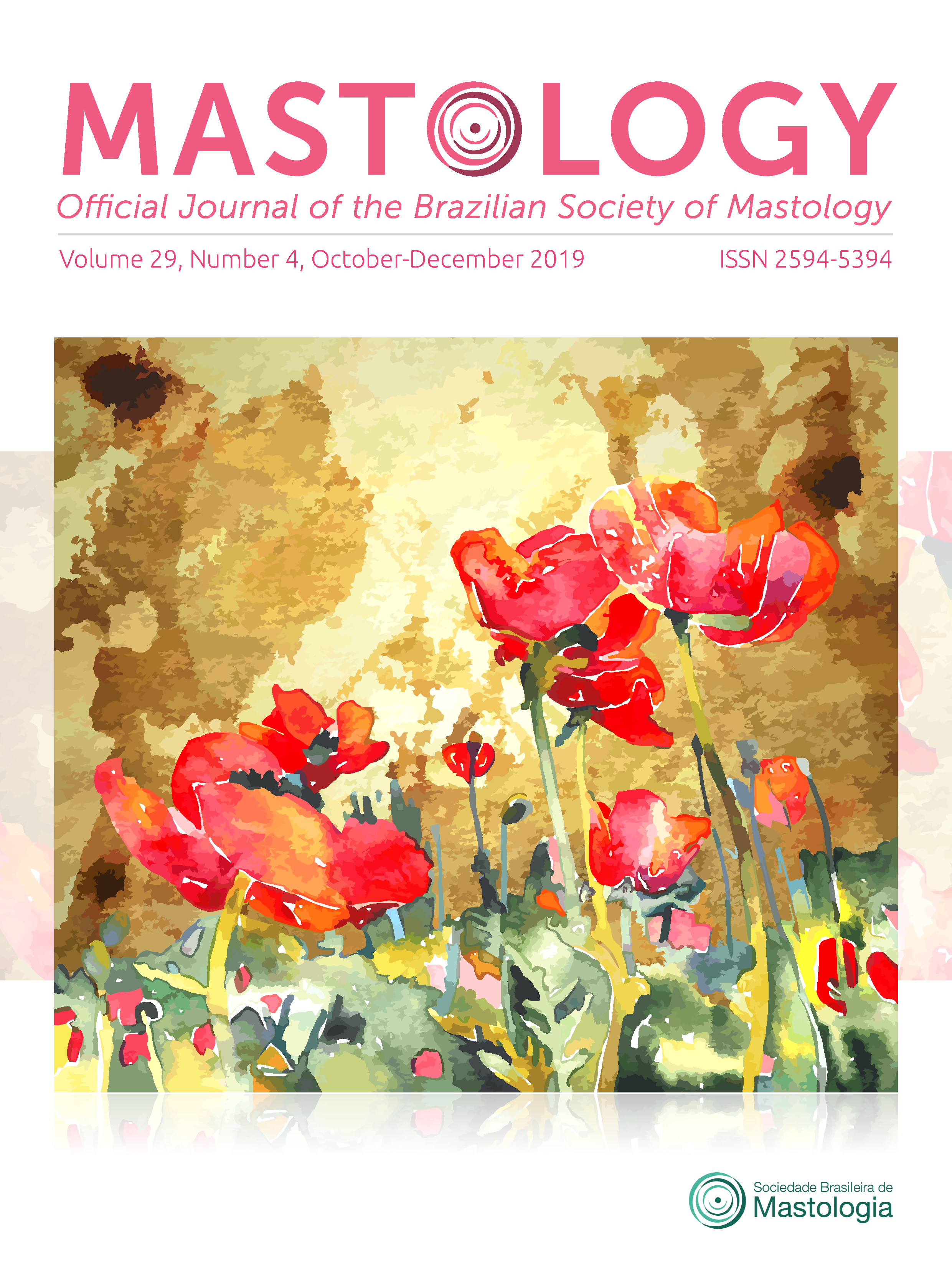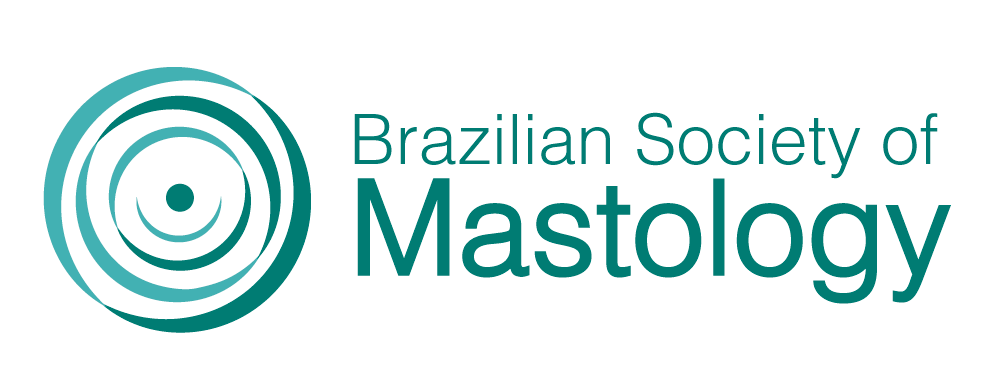Trazendo a navegação de pacientes para melhorar a cobertura mamográfica e o acesso aos cuidados de câncer de mama no Rio de Janeiro
Palavras-chave:
neoplasias da mama, mamografia, navegação de pacientes, atenção primária à saúdeResumo
Este estudo avalia a introdução do Programa de Navegação do Paciente (PNP) em uma comunidade do município do Rio de Janeiro. Os objetivos são: estabelecer a viabilidade do PNP nesse contexto; identificar as barreiras ao rastreamento mamográfico; e assegurar cobertura mamográfica de 70% das mulheres recrutadas entre 50 e 69 anos. De março a setembro de 2018, foram recrutadas 678 mulheres com idade média de 58 anos da comunidade do Andaraí. O acompanhamento foi realizado pelo navegador de pacientes (NP) por telefone, e-mail e mensagens de texto. Doze por cento das mulheres recusaram-se a participar do PNP por razões culturais. As principais barreiras relatadas pelas mulheres foram: problemas do sistema com programação de cuidados de saúde (100%), problemas financeiros (64%), preocupações relacionadas à comunicação com a equipe médica (58%), medo (44%) e apoio social (14%). Foram obtidos 100% de satisfação com o PNP, e a meta de taxa de cobertura mamográfica foi superada, atingindo o percentual de 88%. O NP promoveu aumento na taxa de cobertura mamográfica, auxiliou na transmissão de informações de qualidade, reduziu o medo da mamografia e facilitou o acesso aos cuidados de saúde da mama.
Downloads
Referências
Instituto Nacional de Cancer Jose Alencar Gomes da Silva. Estimativa 2018: Incidencia de cancer no Brasil [Internet]. Brasil: INCA; 2018 [acessado em 3 abr. 2019]. Disponivel em: https://www.inca.gov.br/sites/ufu.sti.inca.local/files//media/document//estimativa-incidencia-de-cancer-nobrasil-2018.pdf
Richards MA, Westcombe AM, Love SB, Littlejohns P, Ramirez AJ. Influence of delay on survival in patients with breast cancer: A systematic review. Lancet. 1999;353(9159):1119-26. https://doi.org/10.1016/s0140-6736(99)02143-1
Unger-Saldana K. Challenges to the early diagnosis and treatment of breast cancer in developing countries. World J Clin Oncol. 2014;5(3):465-77. https://doi.org/10.5306/wjco.v5.i3.465
Goss PE, Lee BL, Badovinac-Crnjevic T, Strasser-Weippl K, Chavarri-Guerra Y, St Louis J, et al. Planning cancer control in Latin America and the Caribbean. Lancet Oncol. 2013;14(5):391-436. https://doi.org/10.1016/S1470-2045(13)70048-2
Rezende MC, Koch HA, Figueiredo J de A, Thuler LCS. Factors leading to delay in obtaining definitive diagnosis of suspicious lesions for breast cancer in a dedicated health unit in Rio de Janeiro [in Portuguese]. Rev Bras Ginecol Obstet. 2009;31(2):75- 81. http://dx.doi.org/10.1590/S0100-72032009000200005
Medeiros GC, Bergmann A, Aguiar SS, Thuler LCS. Determinants of the time between breast cancer diagnosis and initiation of treatment in Brazilian women [in Portuguese]. Cad Saude Publica. 2015;31(6):1269-82. http://dx.doi.org/10.1590/0102-311X00048514
Barros AF, Uemura G, de Macedo JL. Interval for access to treatment for breast cancer in the Federal District, Brazil [in Portuguese]. Rev Bras Ginecol Obstet. 2013;35(10):458-63. http://dx.doi.org/10.1590/S0100-72032013001000006
Anderson BO, Yip CH, Smith RA, Shyyan R, Sener SF, Eniu A, et al. Guideline implementation for breast healthcare in low-income and middle-income countries: Overview of the Breast Health Global Initiative Global Summit 2007. Cancer. 2008;113(Supl. 8):2221-43. https://doi.org/10.1002/cncr.23844
Lee BL, Liedke PE, Barrios CH, Simon SD, Finkelstein DM, Goss PE. Breast cancer in Brazil: Present status and future goals. Lancet Oncol. 2012;13(3):e95-e102. https://doi.org/10.1016/S1470-2045(11)70323-0
Marinho LAB, Cecatti JG, Osis MJD, Gurgel MSC. Knowledge, attitude and practice of mammography among women users of public health services. Rev Saude Publica. 2008;42(2):200-7. http://dx.doi.org/10.1590/S0034-89102008005000006
Oliveira EXG, Pinheiro RS, Melo ECP, Carvalho MS. Condicionantes socioeconomicos e geograficos do acesso a mamografia no Brasil, 2003-2008. Cienc Saude Coletiva. 2011;16(9):3649-64. http://dx.doi.org/10.1590/S1413-81232011001000002
Kuschnir R, Chorny AH. Redes de atencao a saude: contextualizando o debate. Cienc Saude Coletiva. 2010;15(5):2307- 16. http://dx.doi.org/10.1590/S1413-81232010000500006
Brasil. Ministerio da Saude. Portaria no 1.101, de 12 de junho de 2002. Estabelece os parametros de cobertura assistencial no ambito do Sistema Unico de Saude – SUS. Diario Oficial da Republica Federativa do Brasil. 2002; Secao 1:36.
Freitas-Junior R, Rodrigues DCN, Correa RS, Peixoto JE, Oliveira HVCG, Rahal RMS. Contribuicao do Sistema Unico de Saude no rastreamento mamografico no Brasil, 2013. Radiol Bras. 2016;49(5):305-10. http://dx.doi.org/10.1590/0100-3984.2014.0129
World Health Organization. International Agency for Research on Cancer. World Cancer Report 2008. Lyon: World Health Organization; 2008.
Battaglia TA, Bak SM, Heeren T, Chen CA, Kalish R, Tringale S, et al. Boston Patient Navigation Research Program: The impact of navigation on time to diagnostic resolution after abnormal cancer screening. Cancer Epidemiol Biomarkers Prev. 2012;21(10):1645- 54. https://doi.org/10.1158/1055-9965.EPI-12-0532
Bukowski A, Gioia S, Chavarri-Guerra Y, Soto-Perez-de-Celis E, St. Louis J, Nogueira-Rodrigues A, et al. Patient Navigation to Improve Access to Breast Cancer Care in Brazil. J Glob Oncol. 2016;3(5):433-7. https://doi.org/10.1200/JGO.2016.006726
Harford J, Azavedo E, Fischietto M. Guideline Implementation for Breast Healthcare in Low- and Middle-Income Countries. Cancer. 2008;113(Suppl. 8):2282-96.http://doi.org/10.1002/cncr.23841
Freeman HP. Patient navigation: A community-centered approach to reducing cancer mortality. J Cancer Educ. 2006;21(Supl. 1):S11-S14. https://doi.org/10.1207/s15430154jce2101s_4
Freund KM, Battaglia TA, Calhoun E, Darnell JS, Dudley DJ, Fiscella K, et al. Impact of patient navigation on timely cancer care: The Patient Navigation Research Program. J Natl Cancer Inst. 2014;106(6):dju115. https://doi.org/10.1093/jnci/dju115
Jabson JM. Treatment summaries, follow-up care instructions, and patient navigation: Could they be combined to improve cancer survivor’s receipt of follow-up care? J Cancer Surviv. 2015;9(4):692-8. https://doi.org/10.1007/s11764-015-0444-0
Raich PC, Whitley EM, Thorland W, Valverde P, Fairclough D. Patient navigation improves cancer diagnostic resolution: An individually randomized clinical trial in an underserved population. Cancer Epidemiol Biomarkers Prev. 2012;21(10):1629- 38. https://doi.org/10.1158/1055-9965.EPI-12-0513
Percac-Lima S, Lopez L, Ashburner JM, Green AR, Atlas SJ. The longitudinal impact of patient navigation on equity in colorectal cancer screening in a large primary care network. Cancer. 2014;120(13):2025-31. https://doi.org/10.1002/cncr.28682
Ohl ICB, Ohl RIB, Chavaglia SRR, Goldman RE. Public actions for control of breast cancer in Brazil: integrative review. Rev Bras Enferm. 2016;69(4):746-55. http://dx.doi.org/10.1590/0034-7167.2016690424i
Gioia S. Why is breast cancer early detection important? Mastology. 2017;27(3):173-5. http://dx.doi.org/10.5327/Z259453942017EDIT273
Downloads
Publicado
Como Citar
Edição
Seção
Licença
Copyright (c) 2019 Sandra Gioia, Lucia Brigagão, Cristiane Torres, Alessandra de Lima, Marcelle Medeiros

Este trabalho está licenciado sob uma licença Creative Commons Attribution 4.0 International License.







